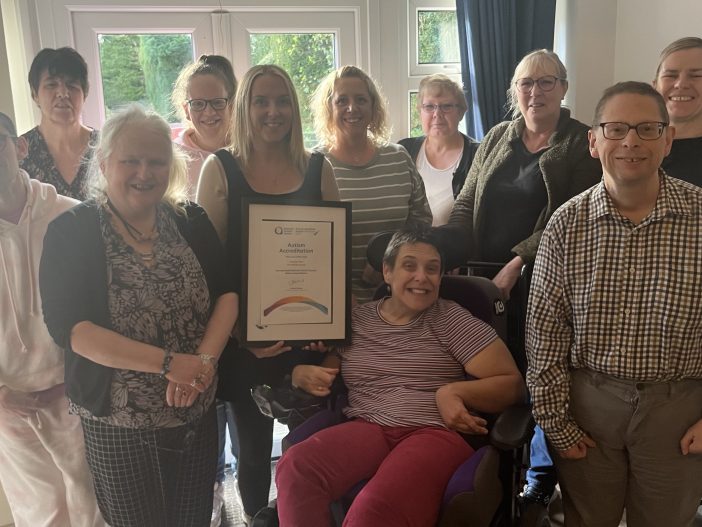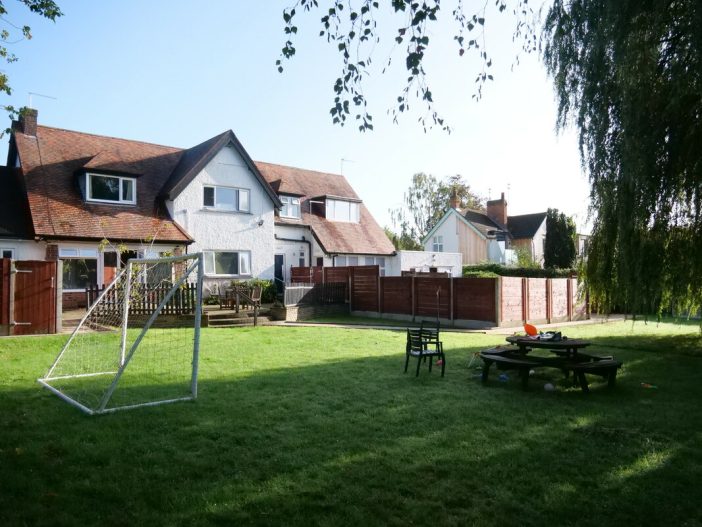Parent blog: Top tips for complex care at home – Part 2
Welcome to part two of top tips for complex care at home. In this two-part series, we’re sharing top tips by parents, for parents about receiving care at home for children and young people.
Through these blogs, we hope you’ll gain an understanding of what to expect from care at home, learn simple strategies to overcome some of the obstacles along the way, and help you feel more at ease with the whole care at home process.
In part one we heard from Huda’s mum, Asma, who shared her top tips including the importance of honest communication and building good relationships.
In this blog, we hear from Eloise’s mum, Helen, who provides a snippet of her complex care story, as well as her top tips such as learning to trust and how to approach making changes.

Meet Eloise’s mum Helen!
“Hi, my name is Helen and I’m mum to Eloise, and her brother, Joseph. Eloise is three and a half and she has CHARGE Syndrome. This is a rare and complex genetic condition that affects every part of her body.
Charge syndrome is a mutation of a CHD7 gene. It can be completely random, or it could be the parent’s genes. It’s an acronym, so each letter stands for a condition that can be wrong with the child, and Eloise has every single one of them.
She’s been through a lot in her short life so far. She’d had two heart surgeries by the time she was one, the first when she was just seven weeks old. That was the scariest.
Her heart flooded her lungs with blood and she’d already had sepsis for five weeks that her body couldn’t fight. She had a 50% chance of pulling through the surgery but without it, she’d have died.
It’s sounds strange, but when you look at her, you wouldn’t think there is anything wrong with her. Except she’s got 16 health conditions and she’s on eight daily medications. But I don’t think of her as any different. She’s just Eloise. That’s who she is.”
Receiving care at home
“Eloise spent nine months in hospital after she was born. Before she was released, the hospital referred me to the CCG (Clinical Commissioning Group), to see if we were entitled to any kind of care hours to help me. They did an assessment, told me how many hours I was entitled to and put me in touch with Children’s Complex Care.
I started having support not long after that for a couple of day shifts, and a night shift. Now I have all nights. They come in and support Eloise with her medications, suction machines and her feeding pump because she’s tube fed.
They do everything for her and just look after her to make sure she’s comfortable. It’s like having a personal nurse and I don’t have to worry too much.
It was hard in the beginning because it was trusting someone else to look after your child. It took me a while to trust them, but then I was like, “Actually I can have some me time,” because I don’t get me time usually. It’s quite nice.”
Read Helen’s top tips for complex care at home below!
Top Tip 1: Trust is key
Trust them. They know what they’re doing. They will be fully trained. They’re not going to employ someone or send someone to you that doesn’t know what they’re doing.
It is hard in the beginning. It was a bit daunting, I’m not going to lie. But then you build up a relationship with the carers. You build up a good friendship with them as well. And as that happens, the trust comes naturally. They become like a friend and they sort of become part of your family.
Top Tip 2: Don’t worry if things change
Children change and so do their needs. Night times are the hardest for me with Eloise. You have to constantly reposition her, and sort her milk out, and do this, and do that.
So, I asked to change from day shifts to night shifts. It was easy to change but made such a difference to me. So, if things change and you need the care to change around that, don’t worry – just ask. You need to get what’s right for you, your family, and your child.
Top Tip 3: Be open and honest
You have to be honest with your provider. If something isn’t working, tell them. If you’re not happy, tell them. They will help you as best as they can. I’ve found them very helpful and if I’ve got a problem, they always help me out.
There have been a few carers I personally felt weren’t a good fit before, so I called the office and explained it wasn’t working. And they’re really understanding. In the beginning, I was really scared about telling them, but they were fine.
But as soon as I did it, I felt a massive relief, so don’t hold back. Just be honest and open because at the end of the day it’s about what you want. You’re welcoming people into your home to help you out and you must be 100% happy with them.
Top Tip 4: Make carers feel comfortable
I’m quite an open person. If you come in my house, just treat it as your own. When carers come to us, I tell them to make their own drinks and help themselves to the food and things. I want them to relax.
I want to make them feel comfortable. So, I think give them a little bit of freedom, but not too much that they then become too comfortable. You really do need to find a balance that works for you.
Top Tip 5: Enjoy some “me” time.
You don’t have to worry. You’ve got a little bit of time to yourself, so try your best to relax! You have that extra bit of help so make sure you take time to focus on you.
I know it sounds like something small, but even if you just go and sit in the bath for an hour. You’re still in the house, but just have that hour to yourself upstairs and don’t worry about where they are or what they’re doing.
Supporting you with care at home
Helen and her daughter Eloise are supported by our Children’s Complex Care team. For more information about how we could support you and your family with care at home in a way that works for you, get in touch!
Call us on 0207 407 7704, email CCCreferrals@voyagecare.com or fill out our quick form.
To read the top tips from part one, visit our webpage here!

 Information
Information 

